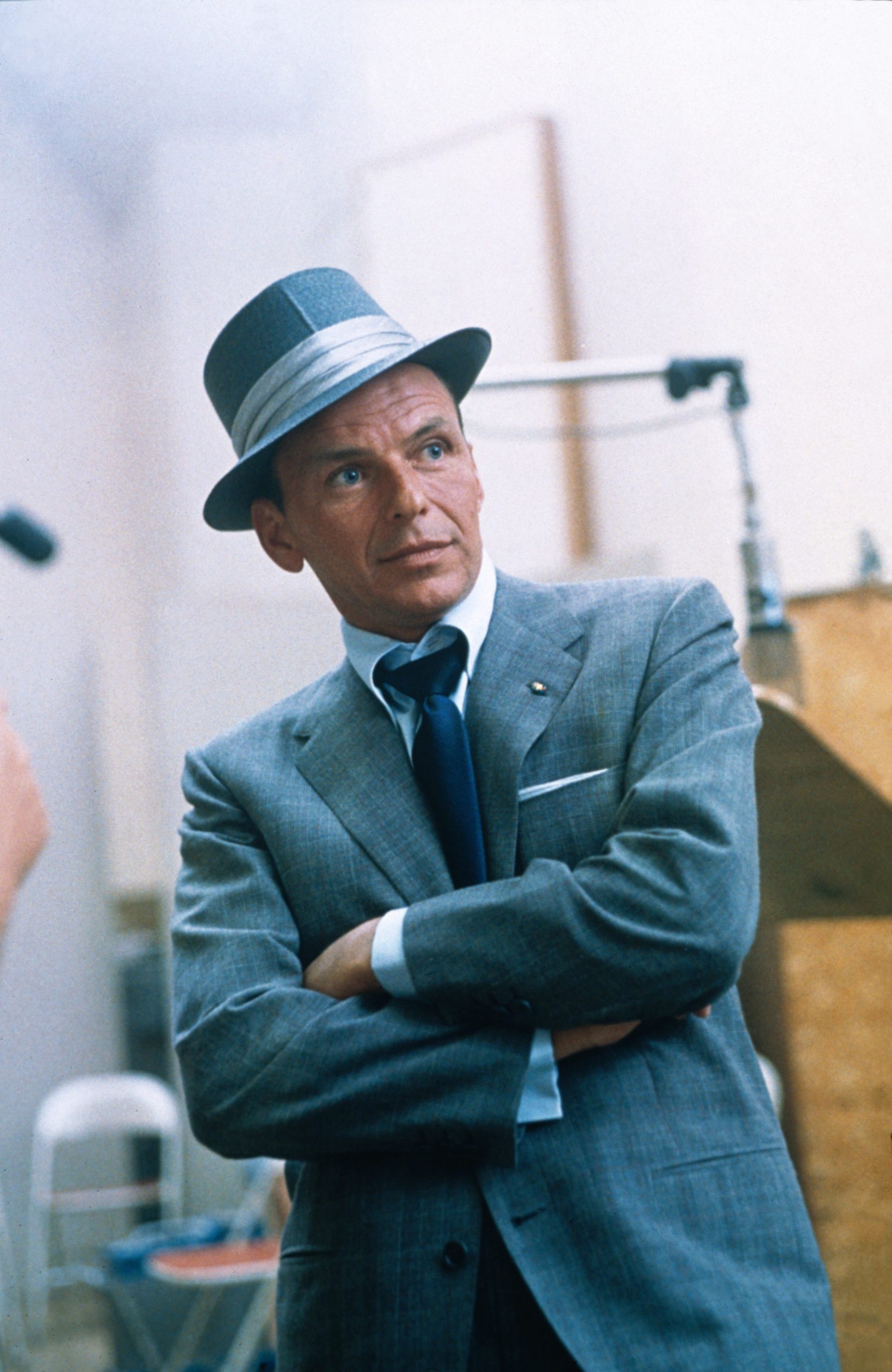Frank Lloyd Wright's Enigmatic Legacy In Iran
Table of Contents
- Frank Lloyd Wright: A Brief Architectural Legacy
- The Unforeseen Connection: Frank Lloyd Wright and Iran
- The Pearl Palace (Morvarid Palace): A Jewel in Karaj
- Shams Palace: A Crumbling Masterpiece
- Damavand College: An Educational Vision
- Nezam Amery: The Iranian Link to Taliesin
- Beyond Buildings: FLW's Broader Influence & Airstream Connection
- The Future of Wright's Iranian Heritage
Frank Lloyd Wright: A Brief Architectural Legacy
Frank Lloyd Wright is considered by many to be one of the most influential architects of the 20th century. His career spanned over seven decades, during which he designed more than 1,000 structures, with over 500 completed works. Wright was a pioneer of the Prairie School movement, advocating for organic architecture that promoted harmony between humanity and its environment through building design. His philosophy emphasized structures that were indigenous to their site, using natural materials and open plans that flowed seamlessly with the landscape. From the iconic Fallingwater, seemingly emerging from a waterfall, to the spiraling ramp of the Guggenheim Museum, Wright's work consistently pushed boundaries and redefined modern architecture. His influence extended globally, inspiring generations of architects and leaving an indelible mark on the built environment. ### Personal Data & Key Milestones | Attribute | Detail | | :------------------- | :---------------------------------------------------------------------- | | **Full Name** | Frank Lloyd Wright | | **Born** | June 8, 1867, Richland Center, Wisconsin, U.S. | | **Died** | April 9, 1959, Phoenix, Arizona, U.S. | | **Nationality** | American | | **Education** | University of Wisconsin–Madison (briefly, civil engineering) | | **Architectural Style** | Prairie School, Usonian, Organic Architecture | | **Notable Works** | Fallingwater, Guggenheim Museum, Unity Temple, Taliesin, Taliesin West | | **Foundations** | Frank Lloyd Wright Foundation, Taliesin Associated Architects | | **Key Philosophy** | Organic Architecture, integration with nature, open plans |The Unforeseen Connection: Frank Lloyd Wright and Iran
While Frank Lloyd Wright himself never visited Iran, his architectural vision, and more specifically, the work of his firm, Taliesin Associated Architects (TAA), made a significant impact on the country's landscape in the 1970s. This connection is a testament to the global reach of Wright's influence and the enduring appeal of his architectural philosophy. The projects in Iran were undertaken by TAA, the successor firm to Wright's practice, after his passing in 1959. Led by William Wesley Peters, Wright's son-in-law and chief apprentice, TAA continued to apply the principles of organic architecture to new commissions around the world. The late 1960s and early 1970s marked a period of rapid modernization and development in Iran under the Pahlavi dynasty. There was a keen interest in bringing cutting-edge international design to the country, often blended with traditional Persian elements. It was within this context that the **Frank Lloyd Wright Iran** connection truly blossomed, resulting in several ambitious projects that showcased the firm's unique approach to design. These projects were not merely imitations of Wright's earlier works but rather adaptations of his principles to a new cultural and climatic context, demonstrating the versatility and timelessness of organic architecture.The Pearl Palace (Morvarid Palace): A Jewel in Karaj
One of the most prominent examples of the **Frank Lloyd Wright Iran** legacy is the Pearl Palace, also known as Morvarid Palace. Located in Karaj, Iran, this architectural masterpiece was designed by Taliesin Associated Architects (Frank Lloyd Wright Foundation) in the 1970s. Discover the breathtaking beauty of the Pearl Palace in Karaj, Iran, designed by the Frank Lloyd Wright Foundation, this architectural masterpiece is a true marvel. Explore its intricate details and immerse yourself in its timeless charm. The palace was commissioned for Princess Shams Pahlavi, the elder sister of Mohammad Reza Shah Pahlavi, the last Shah of Iran. Its design reflects a blend of Wright's organic principles with specific considerations for the Iranian climate and cultural context. ### Design Philosophy and Features The Pearl Palace is a testament to the futuristic design and architectural inspiration behind this unique building. Its most striking feature is its domed roof, which covers a large internal courtyard, allowing natural light to flood the interior. The design incorporates natural light, water features, and connections to the surrounding landscape, all hallmarks of Wright's organic architecture. The use of concrete and other modern materials allowed for sweeping curves and open spaces, creating a sense of fluidity and grandeur. The palace was designed not just as a residence but as an experience, with various wings and levels flowing into one another, creating a dynamic and engaging environment. It was truly a marvel of its time, pushing the boundaries of residential architecture in Iran. ### The Role of Taliesin Associated Architects The design and construction of the Pearl Palace were overseen by Taliesin Associated Architects, the firm that continued Wright's legacy. This involved a team of dedicated architects and designers who worked to translate the vision into reality. The project number for the Pearl Palace was Taliesin Architects Project Number 6523. This image is a digital asset received with transfer of the Taliesin Architects Collection from Frank Lloyd Wright Archives (November, 2021). The original drawing does not remain in the Taliesin Architects Collection at OA+D Archives. This indicates the meticulous documentation and planning that went into such a significant international commission. The involvement of TAA ensured that the palace adhered to the high standards of design and craftsmanship associated with the Frank Lloyd Wright name, even after his passing. The Pearl Palace stands as a living embodiment of how Wright's principles could be adapted and thrive in diverse global settings.Shams Palace: A Crumbling Masterpiece
While the Pearl Palace remains a significant, albeit challenging, example of **Frank Lloyd Wright Iran** architecture, another project for Princess Shams Pahlavi, the Shams Palace, tells a more somber tale. A tour and history of Shams Palace in Iran, now abandoned, reveals a deteriorating masterpiece. Looking up at the framing of the main internal courtyard dome, Shams Palace, Iran, one can still glimpse the ambition of its original design. Around the main courtyard, Shams Palace, Iran, the once grand spaces now speak of neglect. This palace, like the Pearl Palace, was a product of the Taliesin Associated Architects' work in the 1970s, embodying their unique approach to integrating architecture with its environment. ### A Glimpse into its History and Current State The Shams Palace, also located in Karaj, was designed to be a grand residence, reflecting the modern aspirations of the Pahlavi era. However, unlike the Pearl Palace, its fate has been particularly harsh. The palace has been given national recognition, but likely won't ever be restored. This poignant reality is captured in the sentiment: How can great architecture simply crumble to ruins? According to Nima Kasraie's article on Iranian.com from June 4, 2004, the Shams Palace is described as the Frank Lloyd Wright Foundation's deteriorating masterpiece in Iran. The article laments, "If only Frank Lloyd Wright were alive to see this," highlighting the tragic state of a building that once represented the pinnacle of modern design in the region. The abandonment and subsequent decay of Shams Palace serve as a stark reminder of the challenges faced by architectural heritage in times of political and social upheaval. Its current state is a powerful, visual metaphor for the passage of time and the fragility of human endeavors.Damavand College: An Educational Vision
Beyond royal residences, the influence of **Frank Lloyd Wright Iran** extended to educational institutions. Damavand College in Tehran, today known as Payame Noor University, was also designed by the Frank Lloyd Wright Foundation, with William Wesley Peters leading the project. This commission further cemented the firm's presence in Iran, showcasing their versatility in designing for various functions and scales. The college's design likely incorporated principles of open learning environments, natural light, and a connection to the campus landscape, aligning with Wright's belief in architecture's role in fostering human development. The commitment to such a significant public project underscored the Iranian government's trust in the architectural prowess of TAA.Nezam Amery: The Iranian Link to Taliesin
The successful execution of these projects in Iran was not solely due to the American architects; it also involved crucial Iranian connections. Nezam Amery stands out as a pivotal figure in the **Frank Lloyd Wright Iran** narrative. He was the supervisor architect of the Damavand College project as a representative of FLWF. More significantly, Nezam Amery returned to Iran as the only Iranian student of Frank Lloyd Wright. His professional activity started by designing and building a house in the north of Tehran for Dr. Wright. This unique background made Amery an invaluable bridge between the American design philosophy and the Iranian context. His understanding of both cultures allowed for a more harmonious integration of TAA's designs into the local environment and construction practices. Another important figure was Frances, who had been a member of the Taliesin Fellowship since joining in 1946. Prior to that, she distinguished herself notably as director of the Milwaukee Art Institute where she presented an exhibit featuring Frank Lloyd Wright. She worked in Iran for three years in the early 1970s on three large Taliesin Architects projects. These individuals, deeply ingrained in the Taliesin philosophy, were instrumental in bringing the spirit of Wright's work to Iran, ensuring that the projects were not just foreign imports but carefully considered architectural responses to local needs and aspirations. Life at the Taliesin Fellowship is depicted in portraits of Taliesin Fellows engaging in activities such as drafting, model building, and construction, as well as participating in agricultural and farm work, illustrating the holistic training these individuals received, which they then applied to global projects like those in Iran.Beyond Buildings: FLW's Broader Influence & Airstream Connection
Frank Lloyd Wright's influence extended beyond fixed structures, touching upon broader concepts of design and living. His vision for Usonian homes, for instance, emphasized affordable, functional, and aesthetically pleasing living spaces for the average American family. This philosophy of accessible, well-designed environments resonated with various industries, leading to unexpected collaborations. One such modern manifestation of Wright's enduring design philosophy is the Airstream Frank Lloyd Wright Usonian Limited Edition travel trailer. This unique collaboration brings Wright's design principles to a mobile context. The El remolque de viaje Airstream Frank Lloyd Wright Usonian Limited Edition ya está a la venta y cuesta 184 mil 900 dólares. Solo se fabricarán 200 unidades, que irán entrando en producción a medida que se vayan comprando. This limited edition trailer, with its high price point, speaks to the enduring appeal and marketability of the Wright brand. Both Wright and Wally Byam (Airstream's founder) had a vision of the experiences they wanted people to live, adds Hendrix. This connection underscores how Wright's ideas about integrated living, efficiency, and connection to nature continue to inspire contemporary design, even in seemingly disparate fields like recreational vehicles. It's a testament to the universality of his design ethos, proving that his vision was not confined to monumental buildings but extended to a holistic way of life. The widespread admiration for Wright's work is also evident in platforms like the Frank Lloyd Wright Building Conservancy's message board, where Wright enthusiasts can post questions and comments, and other people visiting the site can respond. This vibrant community reflects the ongoing interest and scholarly engagement with his vast body of work, including lesser-known international projects like those in Iran. It's also worth noting that Wright's approach stood in stark contrast to the prevailing architectural styles of his time. Among the most enthusiastic respondents was the American architect Frank Lloyd Wright, who was turning ninety and had recently completed the Guggenheim Museum in New York City. Initially commissioned to design only an opera house in central Baghdad, Wright’s vision quickly expanded after he visited the city in May 1957. This highlights his proactive approach to engaging with international commissions, always seeking to expand his architectural footprint. His rejection of Internationalism and Brutalism, which became associated with gloomy officialdom, and his preference for organic forms, marked a repudiation of standard forms for federal office buildings for 75 years. This broader context helps us understand why his firm's designs were sought after in Iran, as they offered an alternative to the more austere modernist trends.The Future of Wright's Iranian Heritage
The architectural legacy of **Frank Lloyd Wright Iran** presents a complex challenge. While the Pearl Palace and Shams Palace hold national recognition, their future remains precarious. The question, "How can great architecture simply crumble to ruins?" echoes the sentiments of many who lament the state of these buildings. The Pearl Palace, despite its designation as a national heritage site, requires significant conservation efforts, and its accessibility to the public is limited. The Shams Palace faces an even more dire situation, with its continued deterioration. The preservation of these sites is not merely about maintaining old buildings; it's about safeguarding a unique chapter in architectural history and a tangible link between two distinct cultures. These structures represent a moment when Iran embraced modern architectural thought, interpreted through the lens of one of the world's most influential design firms. The expertise, authoritativeness, and trustworthiness associated with the Frank Lloyd Wright name demand that these buildings be given the attention and resources necessary for their survival. Their restoration and preservation would not only honor Wright's global legacy but also provide invaluable insights into the architectural trends and cultural exchanges of the 20th century. The story of **Frank Lloyd Wright Iran** is a powerful reminder that architectural masterpieces, regardless of their original grandeur, are vulnerable to the passage of time, political shifts, and economic realities. It underscores the critical importance of conservation efforts and international collaboration to ensure that such invaluable heritage is preserved for future generations to study, admire, and learn from. In conclusion, the architectural footprint of Frank Lloyd Wright's firm in Iran is a captivating, yet often melancholic, narrative. From the majestic Pearl Palace to the decaying Shams Palace and the foundational Damavand College, these structures stand as testaments to a unique period of cross-cultural architectural exchange. The dedication of individuals like Nezam Amery and Frances, who bridged the Taliesin philosophy with Iranian realities, was instrumental in bringing these visions to life. While the current state of some of these masterpieces is disheartening, their existence offers a profound insight into Wright's global reach and the enduring power of his organic architecture. What are your thoughts on this hidden chapter of Frank Lloyd Wright's legacy? Have you ever heard of these buildings before? Share your comments below and join the conversation about preserving these significant architectural treasures. If you're interested in learning more about Frank Lloyd Wright's international impact, explore other articles on our site that delve into his global influence.- Iran And Israel
- America War On Iran
- Perbandingan Kekuatan Militer Iran Vs Israel
- Iran Before The Revolution
- Iran Elections 2024

UNIVERSAL MUSIC GROUP THEATRICAL AND FRANK SINATRA ENTERPRISES ANNOUNCE

Frank Ocean Might Finally Be Making His Comeback After 7 Years

10 Greatest Frank Sinatra Songs of All Time - soulmusic.net